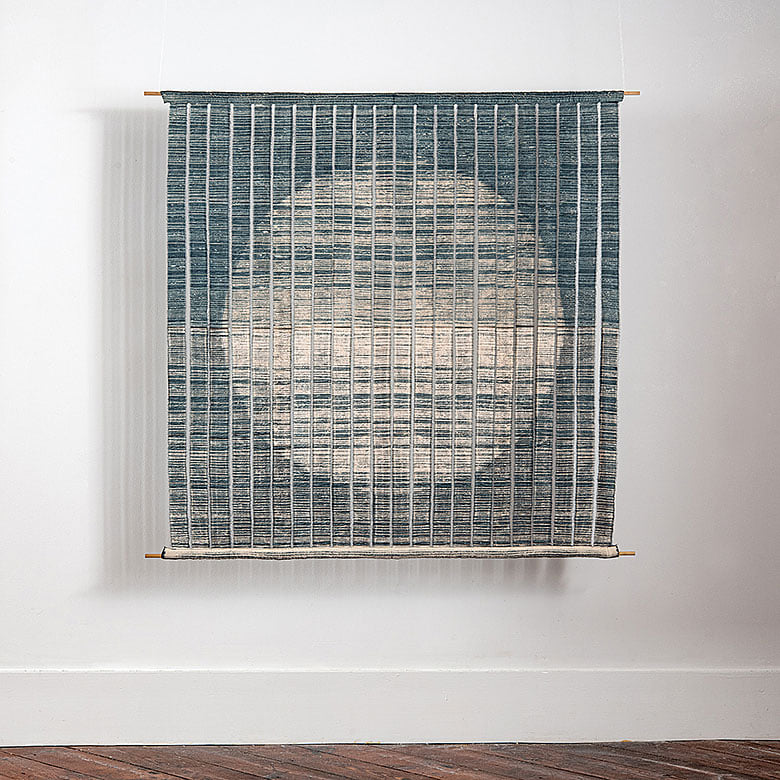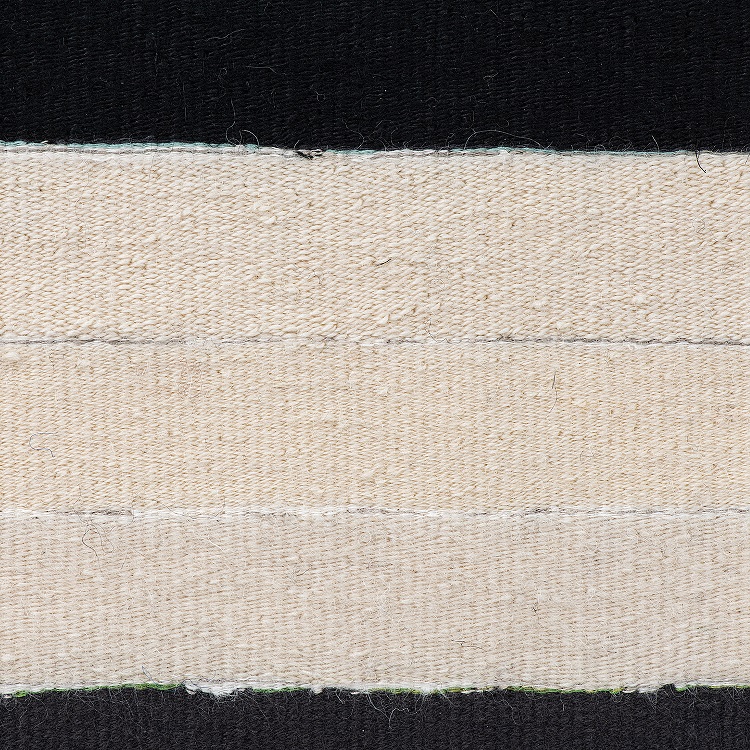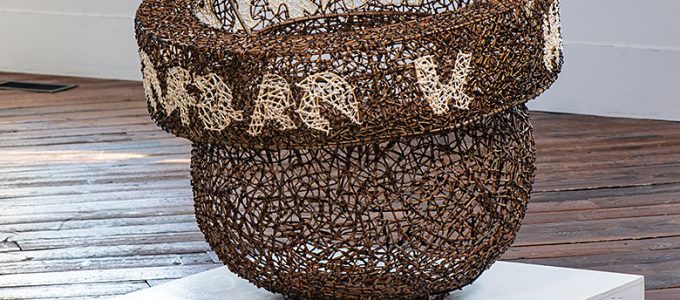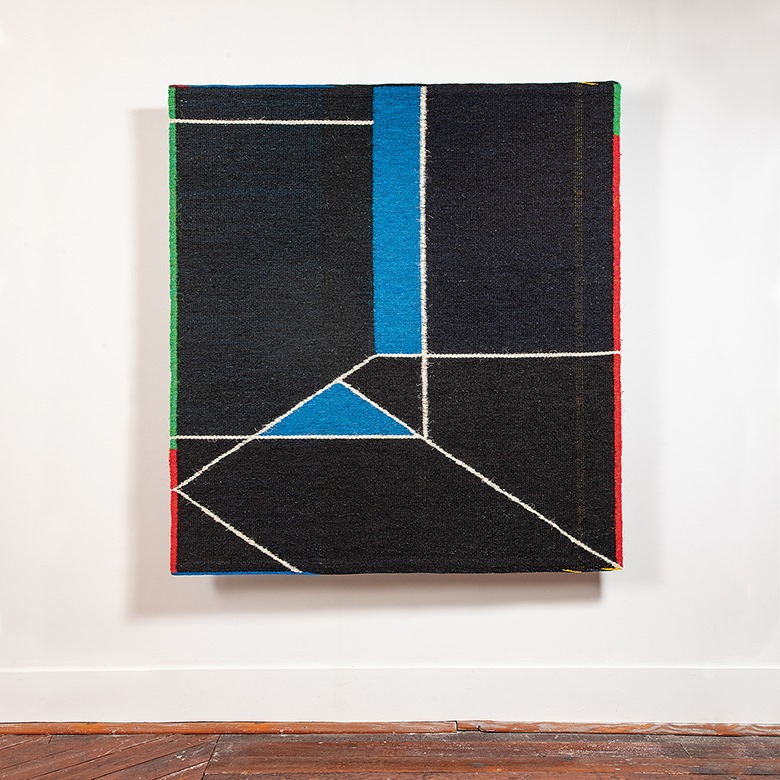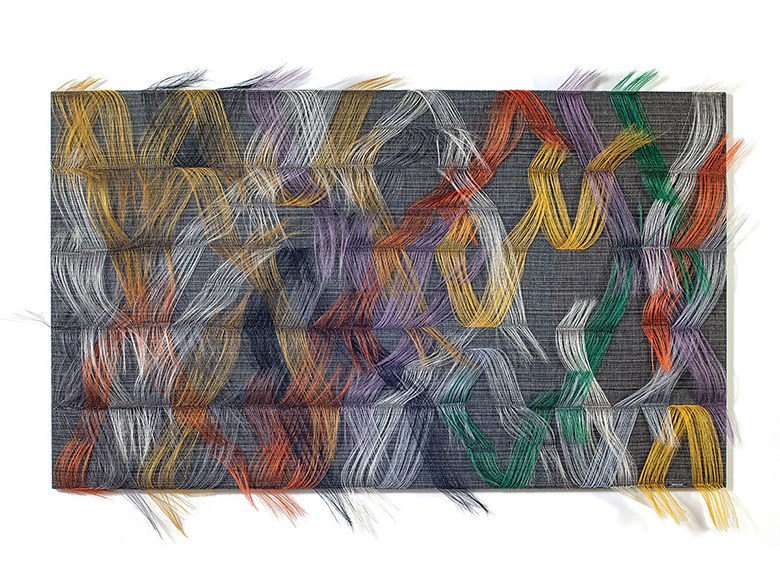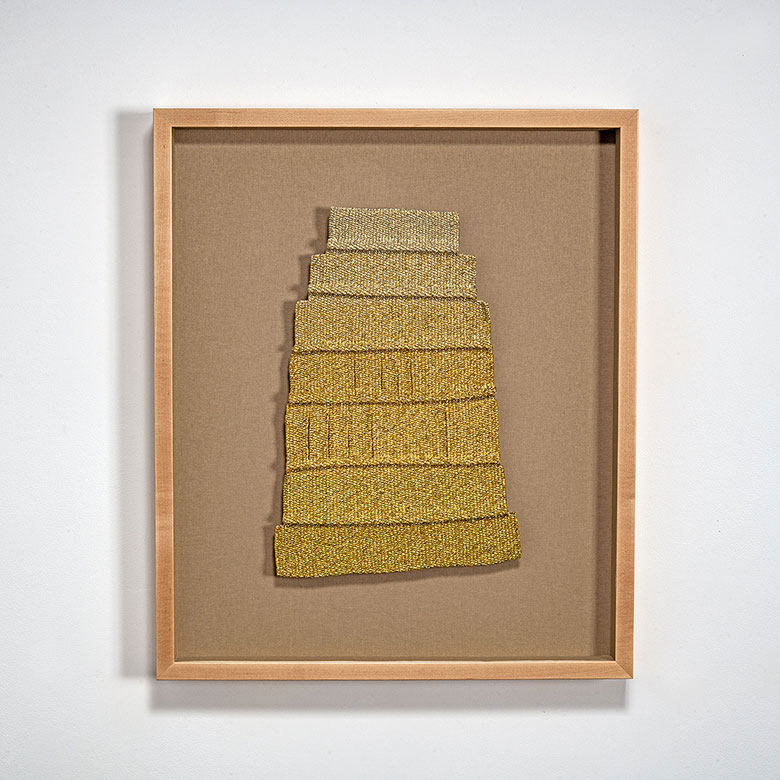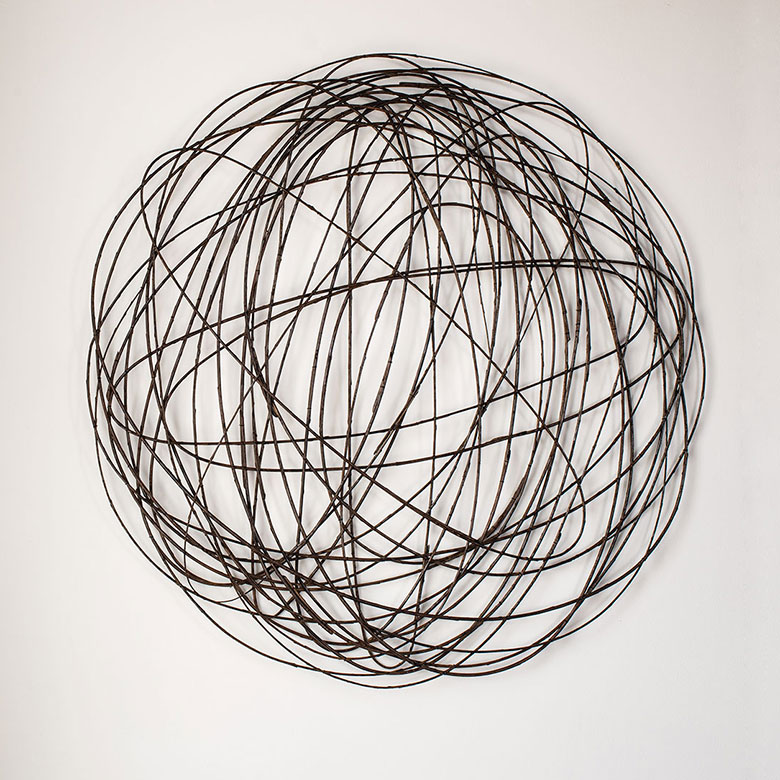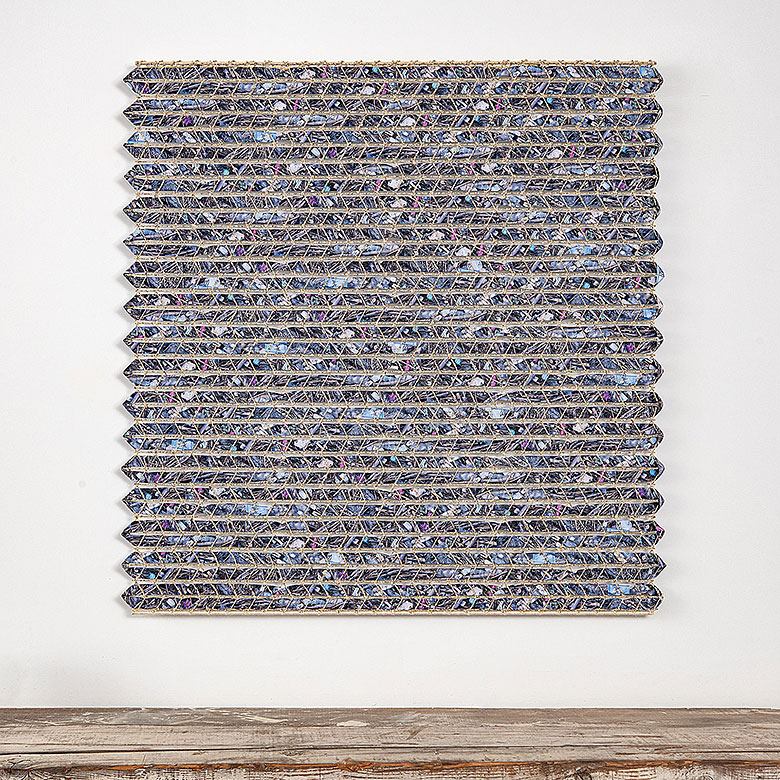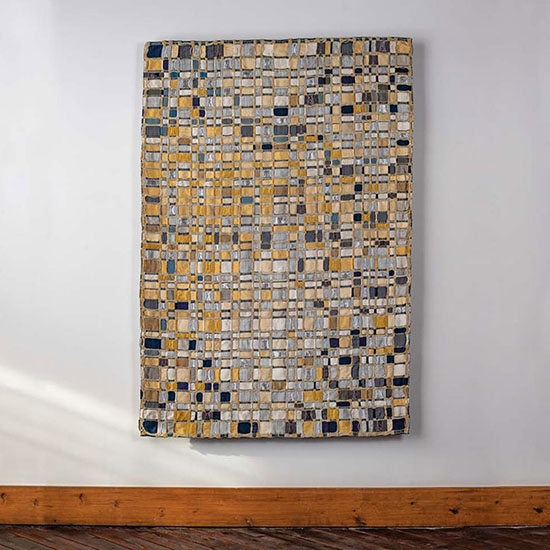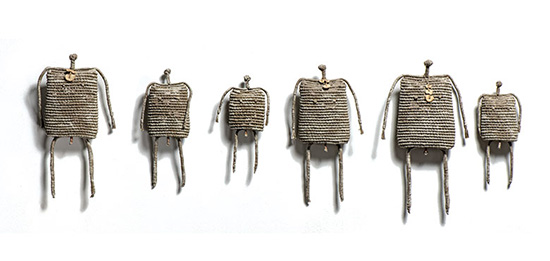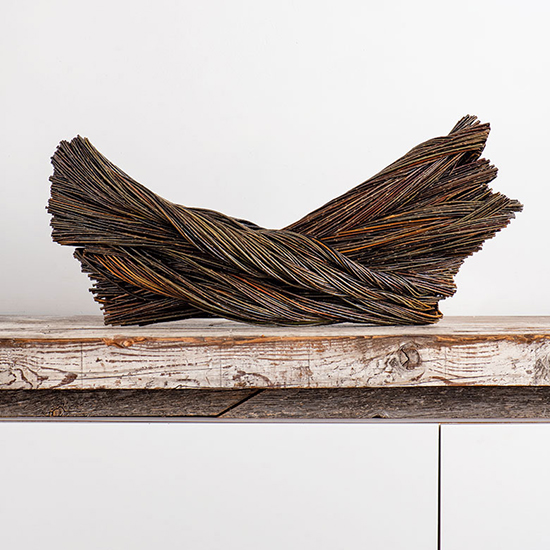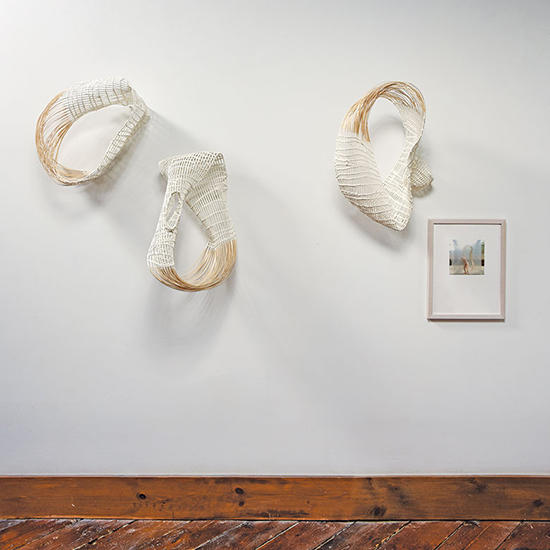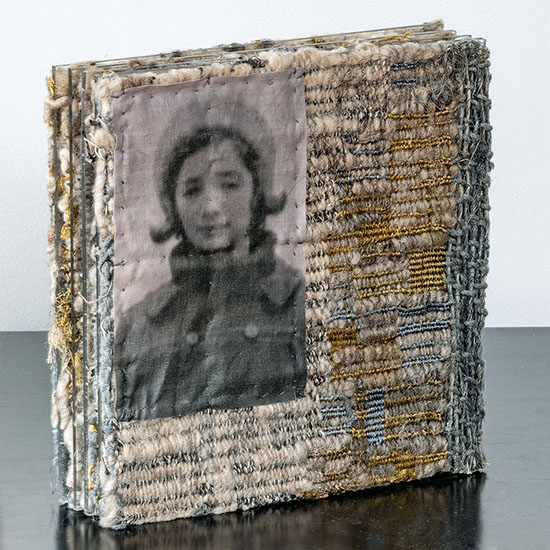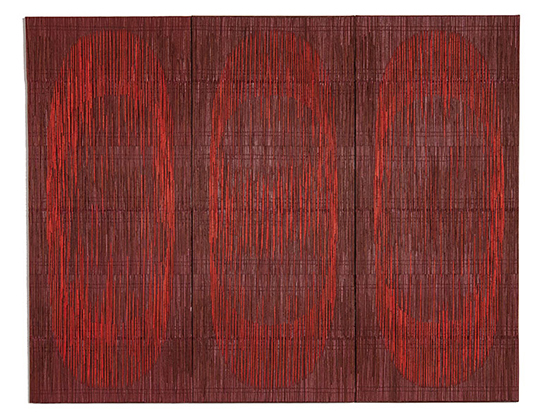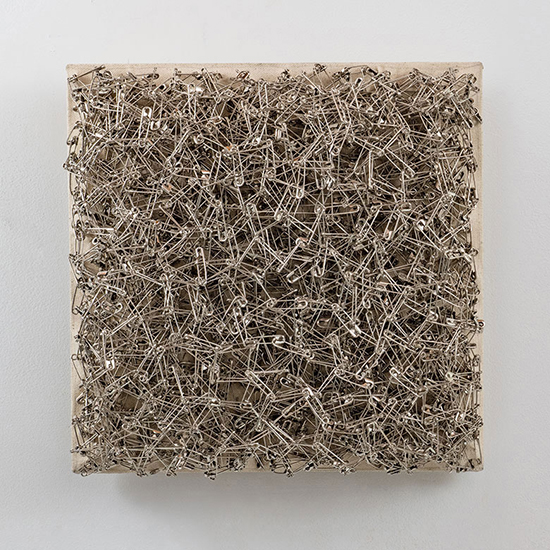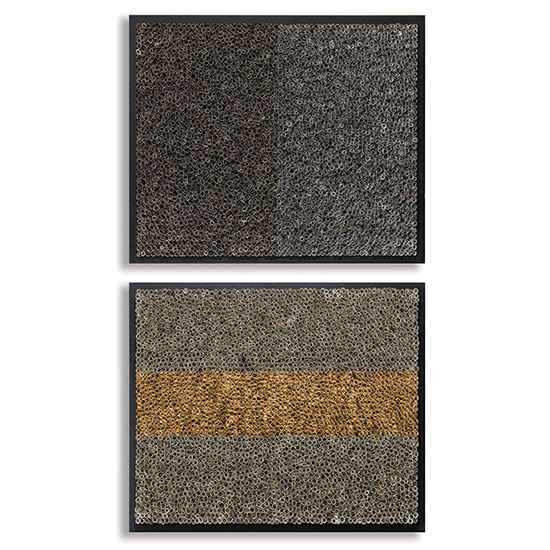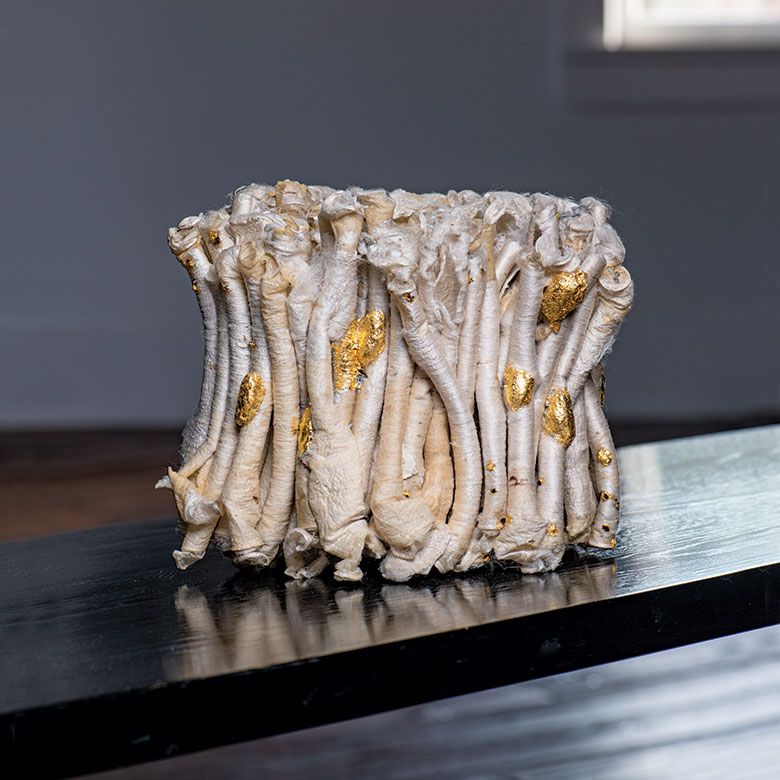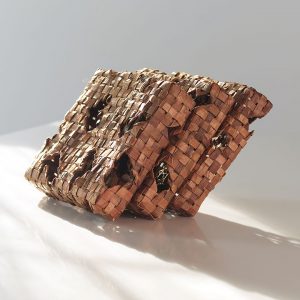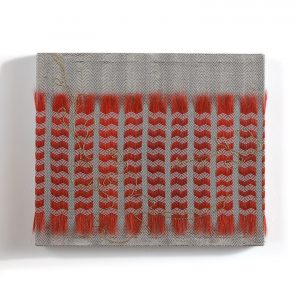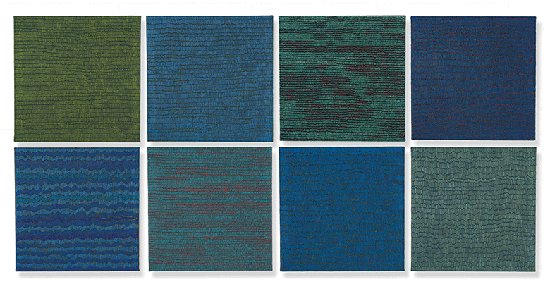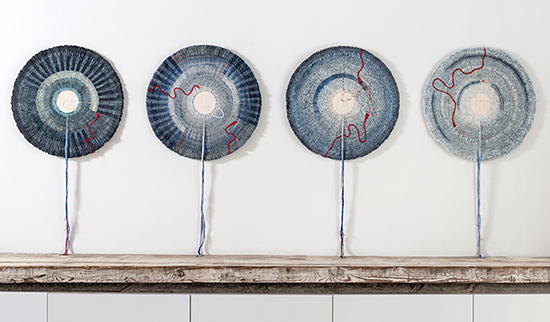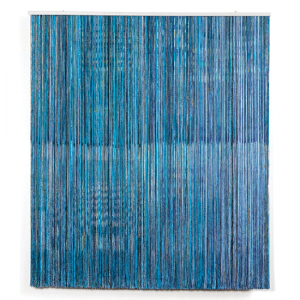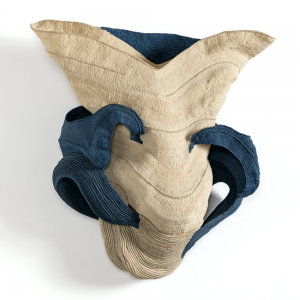October was another month of intriguing artworks.; we featured four works from our recent exhibition, Beauty is Resistance: art as antidote. In Beauty, we celebrated artists for whom aesthetic creation serves as a form of radical defiance, cultural preservation, and political voice. In the exhibition, international artists spanning generations and geographies, challenged the notion of beauty as mere indulgence and reframed it as a tool for protest, remembrance, and imagination.
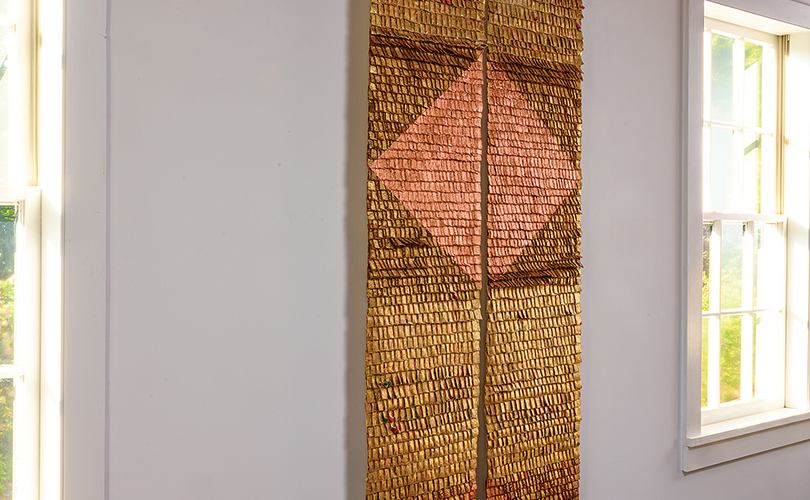
79″ x 35″, 2024. Photo by Tom Grotta
First up was Aby Mackie’s Fragments of a Life Lived 3 made in 2025. Mackie’s textile-based artwork engages with themes of ecology, history, and resistance through a process of reclamation and transformation. Working with discarded historic textiles, she deconstructs and reconfigures them—disrupting their original function to create new meaning. In Fragments of a Life Lived 3 she used antique-ticking fabric as both material and metaphor. Once utilitarian, worn by time and use, the fabric is reconstructed through stitching and further manipulated with paint and gold leaf. These interventions reimagine its surface to form layered, disrupted visual narratives—echoing stories of erosion, endurance, and renewal. The use of gold leaf requires viewers to stop and consider what should be valued and what should be discarded.
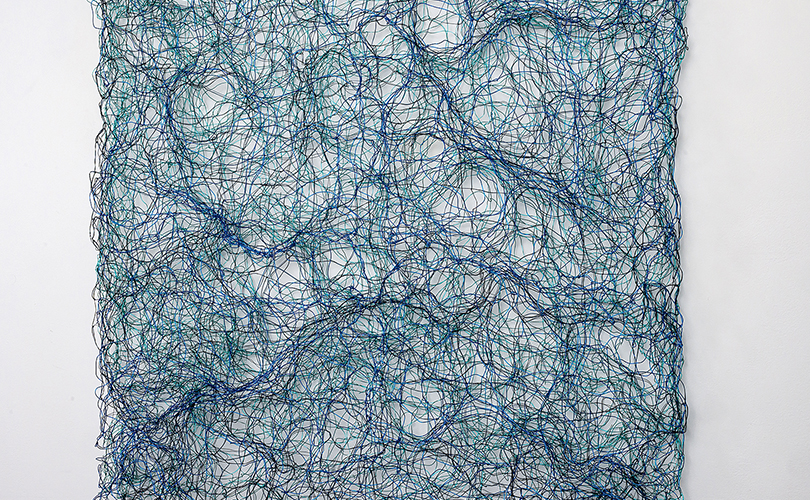
Next we focused on Ocean by Nancy Koenigsberg. The work is a meditation on movement and endurance, rendered in wire—an industrial material shaped into an evocation of tides, currents, and undertow. The piece positions material practice as a form of quiet defiance—an insistence on remembering, marking, and enduring. “The work is concerned with ecology,” Koenigsberg says, “as I’ve been very perturbed by the recent flooding and storms across the country.”
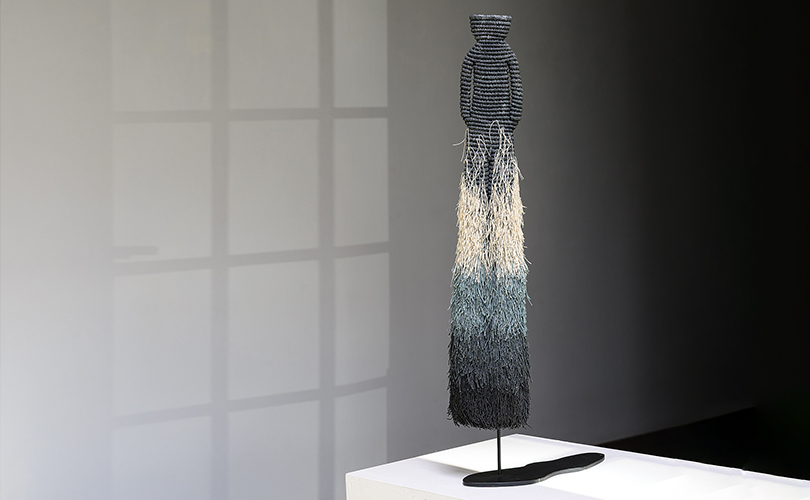
In Grey Shadow, by Mary Giles, the human figure is used both as a formal reference and as an element of commentary. Throughout her career, Giles investigated various media including waxed linen, porcupine quills, and a number of metals like copper and iron. Giles often used coiling—a process associated with Native American basket traditions—to move between two and three dimensions in her sculpture. Giles said of her work, “I interpret and express explored communication and intimacy in relationships. The results are reflected in my figural work. I admire the directness and honesty I see in tribal art and I try to incorporate those qualities in my own.”
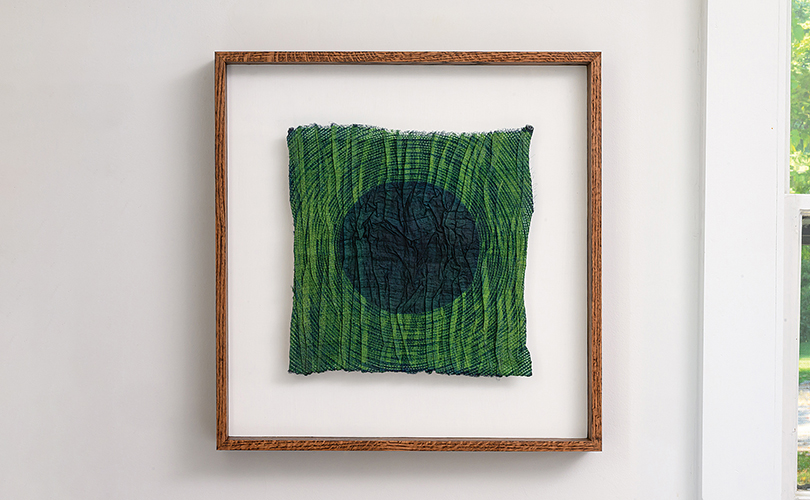
The last work we looked at in October was Luster of Time, by Neha Puri Dhir. Dhir‘s textile study has been broad based, including time at the National Institute of Design, Ahmedabad, India, studies in Italy, Latvia, the UK, and a workshop with Americans Yoshiko Wada and Jack Larsen. Dhir has intentionally explored a variety of textile techniques, developing a particular appreciation for shibori and stitch resist. The delicate lines and textures in Luster of Time, evoke the beauty of aging and the stories embedded in the passage of time. The deep circular form at the center suggests a meditative stillness, grounding the viewer amidst the rhythmic folds. This piece celebrates time as a collaborator, turning fabric into a canvas where aging itself becomes a mark of grace and resilience.
If you’d like to learn more about the works in Beauty in Resistance you can purchase a catalog on our website or join us at a talkthrough of images from the exhibition on Zoom, Art on the Rocks: an art talkthrough with spirits, on November 11, 7 pm EST.

